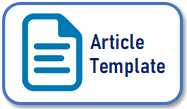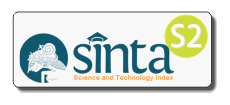Potential of Islamic Insurance Market: Islamic Banking and Sukuk Sectors Case Study in Indonesia
DOI:
https://doi.org/10.14421/grieb.2021.091-07Keywords:
ARIMA, Islamic Banking, Islamic Insurance, and SukukAbstract
This paper predicts the potential of the Indonesian Islamic insurance market, approached by calculating the premium contribution from the Islamic banking and sukuk sectors. This paper aims to determine and analyze the potential development of Islamic insurance market in Indonesia, seen from total contributions from Islamic banking and sukuk sectors over the next five years. The paper uses the Box-Jenkins ARIMA method which is one of the quantitative forecasting methods. The results of this study indicate that over the next five years, the total contribution of Islamic insurance will experience positive growth and it is predicted that it will have a total contribution of IDR 11,568.40 billion in 2023 from Islamic banking and sukuk sectors with the biggest contributor from the Islamic banking sector. The ARIMA forecasting results show a positive trend in the premium contribution of the Islamic banking and sukuk sectors from year to year. Even so, the growth will experience a slowdown. The prediction of a slowdown in the two sectors in its contribution to the Islamic insurance market in Indonesia is a sign that there might be a decline in the total financing growth by Islamic banking. Likewise with the sukuk sector, both state and corporate sukuk are predicted to experience a slowdown in the growth of Islamic insurance premiums.
Downloads
 Abstract viewed: 542 times
|
Abstract viewed: 542 times
|
 PDF downloaded = 561 times
PDF downloaded = 561 times
References
Ahmed, U. S. (2010). Challenges facing Islamic banking industry. Business Recorder, November.
Akhter, W., & Khan, S. U. (2017). Determinants of takāful and conventional insurance demand: A regional analysis. Cogent Economics and Finance, 5(1), 1-18. https://doi.org/10.1080/23322039.2017.1291150
Anwar, H. (2008). Islamic finance: A guide for international business and investment. GMB Publishing Ltd.
Beck, T. & Webb, I. (2003). Economic, demographic, and institutional determinants of life insurance consumption across countries. World Bank Economic Review, 17(1), 51-88.
Firdaus, M. (2011). Aplikasi ekonometrika untuk data panel dan time series. IPB Press.
Firdaus, M. (2006). Analisis deret waktu satu ragam. IPB Press.
Gustina & Abdullah, N. I. (2012). Analysis of demand for family takaful and life insurance: A comparative study in Malaysia. Journal of Islamic Economics, Banking and Finance, 8(4).
Hatidja, D. (2011). Penerapan model ARIMA untuk memprediksi harga saham PT Telkom. Jurnal Ilmiah Sains, 11(1), 116-123.
Islamic Financial Service Board. (2017). Islamic Financial Services Industry Stability Report.
Li, D., Moshirian, F., Nguyen, P., & Wee, T. (2007). The demand for life insurance in OECD countries. Journal of Risk and Insurance, 74(3), 637-652.
Otoritas Jasa Keuangan. (2019). Statistik perbankan syariah.
Otoritas Jasa Keuangan. (2019). Statistik sukuk.
Direktorat Jenderal Pengelolaan Pembiayaan dan Risiko Kementerian Keuangan. (2019). Posisi outstanding surat berharga negara.
Outreville, J. (1996). Life insurance markets in developing countries. Journal of Risk and Insurance, 63(2), 263-78.
Parshar, P. S. & Venkatesh, J. (2010). How did Islamic banks do during global financial crisis? Banks and Bank System, 5(4), 54-62.
Rahman, A. R. (2009). Takaful: Potential demand and growth. Journal of King Abdul Aziz University: Islamic Economics, 22(1), 171-188.
Ramadhani, H. (2015). Prospek dan tantangan perkembangan asurasi syariah di Indonesia. Jurnal Ekonomi dan Bisnis Islam: AL-TIJARY, 1(1), 57-66.
Redzuan, H., Rahman, Z. A., & Aidid, S. (2009). Economic determinants of family takaful consumption: Evidence from Malaysia. International Review of Business Research Papers, 5(5), 193-211.
Sarwar, M.J. (2016). Future challenge in Islamic insurance in Bangladesh. Australian Journal of Sustainable Business and Society, 2(1), 69-80.
Shafique, A., Faheem, M. A., & Abdullah, I. (2012). Impact of global financial crises on the Islamic banking system. Arabian Journal of Business and Management Review (OMAN Chapter), 1(9), 124-134.
Sherif, M. & Shaairi, N.A. (2013). Determinants of demand on family takaful in Malaysia. Journal of Islamic Accounting and Business Research, 4(1), 26-50.
Soemitra, A. (2014). Bank & lembaga keuangan syariah. Kencana Prenadamedia Group.
Swartz, N. P. & Coetzer, P. (2010). Takaful: An Islamic insurance instrument. Journal of Development and Agricultural Economics, 2(10), 333-339.
Yazid, A. S., Arifin, J., Hussin, M. R., & Daud, W. N. W. (2012). Determinants of family takaful (Islamic life insurance) demand: A conceptual framework for a Malaysian study. International Journal of Business and Management, 7(6), 115.
Downloads
Published
Issue
Section
License
Global Review of Islamic Economics and Business is licensed under a
Creative Commons Attribution-ShareAlike 4.0 International License



















